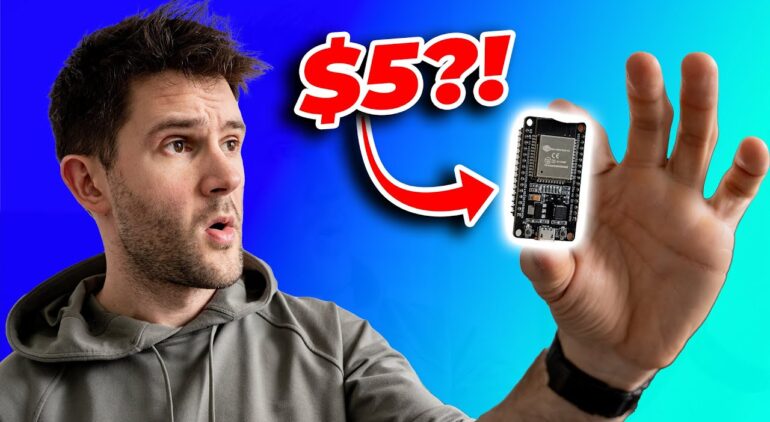
RIP Philips Hue & Govee
This $5 dollar board solves LED Lighting. Head to https://squarespace.com/zacbuilds to save 10% off your first purchase of a website or domain using code zacbuilds
Find out more about WLED here: https://kno.wled.ge/
Join me on Patreon: https://www.patreon.com/zacbuilds
Patrons get ad-free early access to all of my videos + More
Links to all of the tools from this video (All of the below are affiliate links)
EPS32 – https://amzn.to/3nFBBVa
LED Strip Lights – https://amzn.to/3m5fwi5
5V 20A Power Supply – https://amzn.to/3ZCK4Fz
Dupont Crimper Kit – https://amzn.to/40SB8gm
Philips Hue Playbar – https://amzn.to/3nDzCAz
Philips Hue Stripl Light – https://amzn.to/40vNueL
Craftsman Ratcheting Screw Driver – https://amzn.to/3M24x3I
All of the Music and SFX I use comes from: https://www.epidemicsound.com/referral/pw5gp9/
Edited by Brycen Roy (IG: https://instagram.com/brycenroy)
All My Filming Gear:
https://kit.co/ZacBuilds
Check me out on Instagram – @ZacBuilds
https://www.instagram.com/zacbuilds/
Use code ZACBUILDS10 at https://www.badnorthamerica.com for 10% off my favorite work gear
Check out my website for all past projects:
https://www.zacbuilds.com
Views:721694
Taqs:diy,woodworking,crafts,building,build,diyproject,construction,woodcraft,craft,builds,philips hue,smart home,govee led lights,govee immersion,rgb gaming setup,govee rgbic,govee vs philips hue,wled,led,diy led,led lights,smart home automation,smart home 2022,rgbw,eps32,google home,govee rgb,philips hue vs govee,diy lights,diy lighting,wled setup,wled diy,diy led panel,smart home gadgets,smart home ideas,smart home devices
コメント
コメント (408)
トラックバックは利用できません。



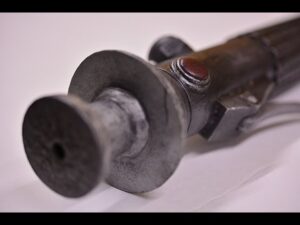
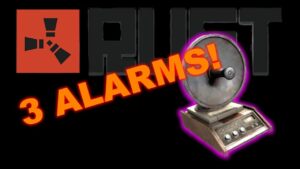




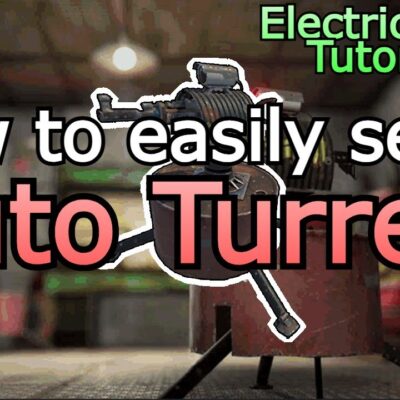









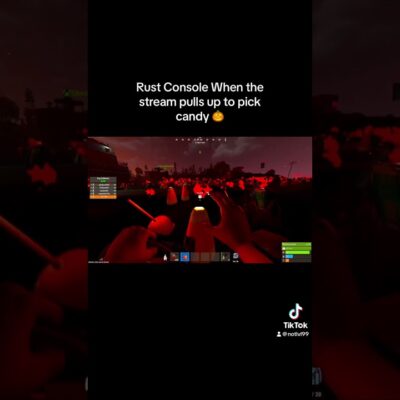





Next time you can also use the D1 Mini. It only costs around 2$
Great information, you should make a follow up video, trying to find out i it works with govee t2 light sync
have you discovered pairing it with openrgb yet? glorious
Nothing about setting up the LED amount or power settings and even WIFI in WLED… worst video I”ve seen yet on any kind of a showme video..
Misleading title….Philips Huge and Govee are directed at the average consumer. Installing this chip and doing all this custom wiring, dealing with power supplies, etc etc etc….that is not something the average consumer knows how to do. Even less want to actually watch a step by step video and learn how to do it. I’d rather just buy the Govee light and have it all taken care for me (I won’t by Philips Hue anymore, they are way too expensive and really gouge the consumer…almost predatory in my opinion).
They make those with USB C
A lot of mis-information here.
Power supply is huge!
Can you help me setup my lights cheaply?
I want RGB or RGBW with WLED 6-16feet.
I couldn’t find the controller at $5
Why the hell do you need it to be USB-C for? Micro USB is much more than it needs to communicate with the computer. And why would you complain about it? Are you neurotic?
Is there any reason I couldn’t wire fcob rbgwcct to the esp?
nahh, thanks, i don’t put so much effort in making my home beautiful, just to put some hardware stuff and wires together which looks like shit and probably burns my house down some day. stick with hue
From experience, if you’re running less than ~125 LED lights in a strip (great for about a ~6′ run depending on your LED density) you can just power your LEDs right off of your board and the 5V that it pulls from a micro-USB connection – removing the need for a separate power supply. The separate power supply is really only needed if you’re going to do control a heap ton of LEDs off of one board. Thanks for the video Zac! Really nice walk through.
Excellent video Sir, goes to show how being smart can save you money.
can you add multiple led strips to one power supply
Tip for people following at home:
I have some 8 year old hue lights and you can easily connect them to a Zigbee 3.0 hub, so instead of “breaking into” their walled garden, you just use a skeleton key. I don’t know if you can still do that with newer hue lights, but I don’t see why not.
Genuine Question: is it even safe to buy a led power supply from AliExpress? I always buy them from expensive company’s because I don’t want to burn my house down
Great video
thing to bare in mind if that the amp draw is peak LED brightness. reality is that your not likely to run it full tilt all the time
I found easier method for calculating length it can run. 100w / 18w per m led strip = Length in meter
PS why did you name the power cord a power adapter? @8:05
WTF, if they added more wire to the switch, flip it 90deg, it could be accessed just from the side through the housing. Why do we need to open and break a seal. But it states it needs to be opened to alter the switch…. Whats is that for reasoning?!?!?!
$5, other expenses, accessories, tools and time
So I should take out that $7 led from my room from eBay?
You can get USB c version for the same price
You lost me at AliExpress.
how do you secure the BT or Wifi on this module – are we saying stock standard wireless security (et passwords etc?)
Type C based ESP32 devkits are Also available
Can we do a led curtain with this?
You have accidentally given away your wifi password. It is : ………..
Oh yeah, that giant ugly power brick is really going to put Govee and Hue out of business.
What a dumb video.
Please make more LED content – I love this video and always come back to it as a reference! I purchased a USBC PD board so I can power mine with USBC!
The board is actually 3$!!
How is this from a cybersecurity standpoint?
but is it reactive?
I found it funny that: he’s stripping a wire with either tiny little hands holding the razor and screw driver or he bought props from Pee-wees playhouse.
Can you get the lights to react to music. Do you need a sound sensor or how does that work?
Any updates on this project? Very cool results, would love to see how you implement studio lighting with this
What about wire gauge? He didn’t say anything about it but it’s a safety issue. If you use skinny wires for 18A of current it might overheat or result in voltage drop, or both. Quinled dot info has so much about this subject.
Hi Zac, great video! Did you use IP67 Led Strip in this recording?
ROFL dude just found out ESP32 exists. It’d absolutely blow his mind to find out that most of those janky LED controllers actually use ESP32s of some flavor. I took apart a lightbulb once and it had one in it.
You may want to add a line level converter to your final version as 3.3v on the sign wire can cause issues on longer lengths of leds. Fairly easy to add. Hope this helps
You have a complaint about security in your smart LED software, and then turn to open source… okay.
Worried about using a phone app on his network … plugs in an Ali express micro computer with bluetooth and wifi into the same network.
Weird.
Are you able to tap into Govee software as well?
Execellent work
WS2812 smart LEDs do flicker, it’s just a lot faster than your camera. (minimum 400Hz according to the spec sheet)
Actually the pwm frequency of the light strip is controlled by the little chip inside each smart LED.
Honestly the only problem I have with this is that you paid $8 for that cable. Absolutely insane.
Do I want to take technical advice from a guy with a shortcut to Acrobat Reader on their desktop.
20A on a wire that can pass around 3A 😀 Also this strip will never pass 20A without losing about 50% on the way 😀
WLED and ESP32 is worth it if you care about details, specific run lengths, number of LEDs per meter, specific RGB scenes.
If you’re just Joe blow looking to have some lights underneath the bed or behind the couch, and an IR remote is good enough to change colors for you. Stay generic, it’s not that expensive and it’s a ton less time, and there is zero chance of burning your house down.
It ain’t worth learning about power injection and soldering and using a multimeter just for that.
Philips hue is more than led strip…
Those wires probably aren’t rated for carrying 20 amps, luckily your strip wouldn’t run that much nearly ever, but if it did you’d want to run your DC power supply to the other side of the strip as well, to mitigate voltage drop, wire heating and even internal breakdown on the strip itself (since it is it’s own conductor)
The flickering is caused by a low frequency PWM modulation for dimming, not AC power.
Otherwise great tutorial and really love that people are moving away from proprietary garbage.
If you want to sync the lights with hue, I’d highly suggest going down the home assistant rabbit hole. Doing just that would be very easy, but inevitably you’ll want to do more.
Please tell me you have a part 2 to this video for noobs like me.
What I mean is how do you get those led strips wireless so you can put them anywhere without having them connected to a brick power supply like that. And do you need to keep that little bored plugged in somewhere at all times? If so how do you hide that? Would be an eye sore just sitting out in open view. My opinion anyways.
I’m looking for cheaper lighting solutions and have always used Phillips but it’s so expensive. I’ve only got 2 of their bulbs. Never used led strips before so not sure how all those work yet but I’m hoping they can be wireless. Would be nice to find cheaper bulbs as well. Need a couple in my closet.
That psu is a firehazzard
However, this only works for LEDs with serial communication; regular LEDs won’t work.
Just found your channel, great topic! Curious if you’ve dove into Home Assistant to replace your Hue cloud stuff?
You can use something long to switch the dip switch. You don’t have to open it up.
Very cool project! But $5 for the board is not everything, there is also the power supply, the LEDs and stuff that creates additional cost.
Please, cut out the pointless bg music noise !
I did this a few years back with an Ikea Vidja lamp. It’s got 3 individual white shades on it as a 4 ft” cylinder. I put some PVC in between each section and ran 3 strips of 5m around them, inducting it additionally.
These effects look great when they’re wrapped around an object instead of a straightcurvy line.
The apps are a serious concern…..
I have a Wiz bulb light which was given me some software issues. So I take it apart to see the insides, and I found that the light was controlled by the same ESP32 as you showed. Also I found information about other brands using the same ESP32.
I will try to flash the controller board with WLED using a usb-ttl adapter and see what I can do!
I’d be a little worried buying something from that website and plug it into my computer. Anything can have spyware loaded onto it nowadays
There is ESP boards with USB-C connector, you need to pick the version that you want. WLED is quite versatile, a great choice.
FWIW, to avoid overheating your power supply, you should use the 80% rule. 5v x 20a = 100W x 80% = 80W maximum output. Choose the wattage of the LED strip(s) appropriately.
Anyone tell you that you sound like Doug DeMuro?
yeah why spend 100 dollars on a philips strip that is already zigbee ready when you can just spend 120 dollars in total on a power supply (that will totally not blow up, trust me), aliexpress strips and some janky controller that lacks zigbee functionality and on top requires a lot of know-how to assemble in the first place including hours of your time.
How would you use the ESP32 with a strip that has 6 connectors?
GREAT VIDEO!! Is there an update on this setup?
Uhm, Phillips uses/supports Zigbee 3.0 now, which is an open source standard. Yes, some features are Phillips exclusive, such as Hue-Entertainmen, but honestly, that is also not something that is easily replicated by DIY. You can control your strip direclty from your Bridge, if you get a Zigbee Controller.
You keep saying “people who like to film themselves”? You mean like pornstars and famewhores… ok, but I’ll never look at you the same way.
can this help save money setting up ambient lights (like Ambilight) behind the monitor or TV?
I have been making WLED stuff for years. Guides and demos on my channel.
You should have a power supply of at least 22.5A output
We build LED signage and an LED power supply is deemed to be overloaded if it exceeds 80% of full load current and 18A is 90%
Especially an Ali Express power supply
What’s the mobile app you’re using ?
Website is deleted.. seems trusty 😂😂😂
Oh boy… I love having an exposed terminal strip on my step down transformer 😅😅😅 cover that up dude. Just asking for a short or a shock.
Soo many wrong things here.. one is that 20a through the pcb trail on the led strip is asking for fire if it ever shorts, thats why a 12v system would be much better. ( more volts is less amps needed), another is that with these adressable led strips the esp32 doesn’t determine the pwm, its the chip with/in each single led that determines the pwm, and thus flicker. Cool promoting this to people regardless, but please, bit more research 🙂
Worthless Video
Important note RGBWW are WAY Better then RGBW and not too much more expensive;
Otherwise you miss a large spectrum in the WARM end of white and colour mixing.
I recently got a heltec wifi kit 32(just an esp32) , and also installed homeassistant on a small Dell optiplex 3050
Good video. You need to invest in a ferrule kit and crimper tool. You should be binding terminals to ferrules when possible. It helps with wire strain, better electrical connection, and more.
Also power supplies should never be run over 80%. Personally, I aim for 60% for a margin of safety but also still close to their most efficient power conversion.
Does anyone the wiring diagram for multiple LED Strips to be connected to the esp32? Thank you
Anyone know what the name brand of that floor lamp is at 1:07? I am having the hardest time tracking down something like this for a bonus room above the garage. The corners are shorter so a normal size corner light will not fit.
2:14: you’ve provided all the reasons I went with Hue. I’m not typically a “big name” purchaser if there’s a better alternative, but a few years ago they were the best game in town. And while closed source, Hue integrates well with other systems in my home.
My favorite thing about channels like yours is that you bring so much enthusiasm to something that some might deem simple. I’m sure this is well documented somewhere but I just love learning how to do things like this from people like you. And to take it a step further, the YouTube community surrounding channels like yours never disappoints. You can always find extra nuggets of quality information in the comments. I love it!
Couldnt you just buy a remote control LED strip and swap out the controller for out for an ESP32?
Would save the hassle of sorting a psu for it then.
There are USB-C ESP32 devices. I bought 4 from Amazon.
I am totally cool with the advertisement, as I can then use Instagram without missing the video 👍
This is not a good video. Whereas, on the subject of “How to make a campfire at home – 101” Yeah, ok, good video for that….
So you say that you don’t trust some apps that come with LED strips?
But in the next second you connect a random device (with storage on it) bought from AliExpress directly to your PC? 🤔
Thats a bit of a weird understanding of “safety concerns” 😂😂
Is it possible with 12v led strip? Because the power supply is a lot smaller. Only need to know if that works with the board. Cheers!
If you are just wanting to integrate led strips to Philips hue software there are some controllers that allows you to do that, but can be pretty hard to find. But this is pretty nice if you want to switch to an all open source project. Now what would be interesting is if you can control your Philips hue lights with the open source software.
The ESP would have zero effect on flickering, that is native to the LEDs themselves and how their PWM is driving them.
Does it work on Mac OS or just windows?
oh, the fat olfa heavy duty. i had one for a while. to make sure mine was different so nobody could blame me for losing the other ones. but i prefer the standard hd olfa. have one in my pocket all the time. have forgot to take one out before heading through airport security. noticed right when i was putting my stuff in the tray. i was like “you can just chuck it out or keep it. i forgot i had it in my pocket. its a daily driver”
Hi Zac, can you tell me what make and model that monitor you’re using is? Thanks!
* complains about downloading shady apps on phone… *
* proceeds to download shady app on computer *
“Device connected to network. That’s awesome!”
Digital LED strips arent cheap as well. My project with 2x1m + ESP32 and other stuff cost more than Hue rgb strip
Good video, but man the title sucks. I watched it in the past and didn’t remember it. It took ages to find again. :p
Do not screw the wires into the PSU without soldering the copper strainds together.
Philips Hue closed source? They were the first in the industrie with an open API leiding to hundreds of 3rd party apps and partner integrations. What would you like to be more ‘open’ than there is now?
Strange video, have Philips Hue lights here for 9 years already and they are still amazing. That is why Philips Hue is not dead, it’s expensive but very high quality.
Hey Zac , can you use these LEDs with DMX software like QLC+ and if so can you make a short video about how to set them up ? please
Built an entire DIY custom smart home with esp32s back in 2019. Managed it from a webpage hosted on my home server. It was pretty cool. Would recommend.
A lot has been said already but there is a lot of information here is is not quite right. Just as a heads up you want to size the power supply up so you are running it at 70% of max output, most manufacturers state it in the documentation, but you are buying crap from Ali soooo…
Them power supplys are so not safe all that metal and wiers touch them you can die bad bad 😢😢😢 use a seald power suply safer 😊😊
Imagine if he learned about the DigQuad. #MindBlown
The LED strip alone you linked is 45$. Plus board, power supply etc these are expensive lights! Govee m1 lights go on sale for cheaper then these.
The lamp you turned around to explain the flickering. Is that one you bought or built?
Given that that’s a very generic ESP32 dev board… the fact that you got one without USB-C (Look for ESP32-S3) is more a shopping mistake than anything wrong with the product.
Why is the 5V power supply so ridiculously huge?
Surely they’re not all that size, right?
What monitor is that? Samsung frame?
Dope. Now we need an Alexa type device software to control them with voice
So you just plugged an unknown aliexpress usb device directly to your computer…wtaf!
Huge power supply for 5v dc dang overboard
Dude wants a current usb-c port that isn’t how manufacturing works for industry swings and price drops.
can it sync to music too?
What’s the best way to use multiple led strips if I want a long run or multiple strips throughout the room? A board and power supply full setup for each or is there a way to combine them?
ESP32 has been a great little board for a long time now, the real win here is that OS for it! Great work, devs!!
Lights scheduled to turn on before the alarm clock? What kind of sadist are you!?!? You’ve gotta do it at least one snooze after your alarm clock.
which monitor are you using or is that a tv?
WLED has built current limiting which by default is 850ma so it wouldn’t burn out the microcontroller. Also, you can buy an esp32 with USB C or a number or other connectors l.
Man, the holiday LED light show people have been doing this a few years lol. Wait until you figure out integrating NFC.
I know this is an older video, but if you want a less messy solution there are small boxes that contain the controller board and just have a simple power in and out connections without worrying about having to bypass the controller. There is an Anthom controller that will pass through 16 Amps of 5-24V out of the box with WLED pre-installed. The controllers are more expensive but the setup is much tidier, there is also a newer manufacturer that has just turned up with similar $10 boxes that only do 10 Amps.
Also, if you are worried about consistent colour output over a longer line of LEDs, 12V is better as you have less issues with voltage drop.
BRO.. Govee is $14 😂😂 How much was the crimp kit and all that stuff?!
I was just really afraid of him accidentally touching the EXPOSED high voltage connectors just openly screwed to the PSU.
At 11:00 there’s an important part of information for those building this in countries where electricity costs half a leg such as in Belgium: powerconsumtion for 5m of LED is 90 Watts. Philips LED strip of 2m consumes about 20 Watts at full brightness, so 50 Watts for 5m. That is about half of it. Since those LED strips are used at places where they are on a lot, the difference in price can be futile after one of two years. I do really like ESP and ESP Home (using it for tons of different things) but when it comes to lighting, when putting all info together when used in countries where energy is expensive, it is difficult to beat the big brands such as Philips Hue. It is expensive at time of buying, but when looking at long term use, it is reliable, easy to use and cheaper
BUT: much appriciated video (subbed) as it is a clear guideline on how to build this yourself at a very small cost. I always like channels where they give a lot of info and actually show how to build things. Hats off!
One thing I am curious about: what about Hue dynamic scenes? Is it also supported
@ZacBuilds Doing some research online, the green data wire should always be 5V. Do you think that this setup would work with 12v or 24v LED strips if you use a Step Up Converter (For LED Lights) or Step Down Converter (For the ESP)?
If you want esp with usb c, then don’t buy esp with micro usb. Just get it with usb c. It’s like buying orange juice and then complain it doesn’t tast like apples.
man this is amazing.. i did led stuff with wemos mini when it came out… but back then u really had to code…t his page wled is a real gift!! def will get me one again :D:D
Nice expensive wooded furniture with tools and metal cases thrown on them. Hmmmm🤔
Oh my god with the kind of port neurosis. So what if it’s a C or a Mini or a micro. Never was so pointed before. Neurotic Gen.
any idea what the cri is with those led?
spidey sense kinda tilted when I heard “enter all your wifi info” into a $5 AliExpress controller.
🙂
Amazing video Zac!!! Just curious if you can control multiple LED strips from one app?
tv / monitor model?
If I wanted to hardwire this set up can I connect a 14 wire to the driver (power supply) directly from power in the wall and then wire that to a switch in the wall?
dude. invest in wire strppers! take it from a 41 year old with a groove worn between my top front teeth.
‘open source’ yet u don’t know about the flaws about the esp32 yet promoting it diehard.. you can write malware on it without it ever be found.. now you can wonder why these chips are so cheap.. do your research..
I’m a bit late but I have 220v dc rgb rope light with ir adapter and it sucks can I controll it using nodemcu ?
get yourself a wall timer to shut it off if properly.
If you are into DIY that’s good, just go for it. In the end, I went with govee, and I’m glad. The DIY is difficult, for me, the power supply is way too big, you need to spend hours and hours to find all the right components. Those 5$ controllers are always slightly different from each other, so the power supply, if you don’t know how to use them, where to connect the cables, how to program the software very complicated , then it’s a nightmare. Hours and hours lost, my experience. With Govee I found what I wanted, it’s expensive but half the price of Philips, the led strip is fantastic, and the App is fairly easy and very customizable, and everything works right away, very quickly. That’s my experience.
Many WiFi bulbs and other WiFi-enabled LED lights, especially cheaper ones, already contain an ESP8266 (often in the form of a Tuya module). The ESP8266 is the “younger brother” of the more powerful ESP32.
For the adventurous with a soldering iron and a USB to serial adapter, you can connect up to these and reprogram them with WLED, Tasmota, ESPHome, or whatever other control software you prefer.
Safety first: If you try this on a lightbulb or other mains-powered device, DO NOT have the device connected to mains power AT ANY TIME while you have it open or have programming wires connected to it! Let the USB to serial converter provide the required 3.3V power.
Hey man! great video! is possible to make them do the gradient mode like the philips hue?
Lol, recommends not trusting an Ali Express smart light on our home networks but proceeds to connect an Ali Express board to the network.
Im wondering what people are actually buying…
Is there anyway i can use this board to use strips and sync with the media im playing in my monitor?
That power supply is way overboard
i wonder, is it possible to connect zigbee, lsc or other led lights to connect to this pcb
so i dont have to use a lot different apps, because lsc doesn’t have E14 anymore here in the netherlands….
Please do not suggest to use 18 amps through (the preconnected) cables that are only rated for about 1-2 amps. They’re probably 22 awg (0.92A) or 20 awg (1.5A). They get really, really hot if you carry 18 amps through them. And even if the LED’s specs are not accurate 1.5 amps is not even close to 18 amps. Even the Black connector that are pre added to the end of these LED Strips are only rated for about 4A.
If you connect a 5m String, you’ll have to add more wires every meter or two to reduce the heat in the strip and to get a better color-match further down the strip.
Ahhhh no ferrules on the PSU wires :/
There’s usbC variant too.
Great video 🙂 Question: Does the power supply have to be this big?
You can absolutely buy ESP32 boards with USB-C
Ackchyually, AC power “flickers on and off” 120 times per second on a 60Hz system; 60 times positive voltage, and 60 times negative voltage, (120 times no voltage). Cheapie LED drivers will just draw power from one half of the sine wave causing a more prominent flicker, other drivers (using full bridge rectification) draw from both halves of each cycle making the flicker less apparent.
You won’t fry the board by simply connecting the LED to it. Components don’t ‘pull’ current when connected. Hence the reason you get dimmed lights when lower voltage is applied. You’ve also connected your ESP to your PC. Your USB port can only supply V5 at 0.5A, so you physically cannot fry anything.
Small mistake but it shows that you don’t know how electricity and components work fundamentally.
That’s one big ass power supply for the light strip. Good luck tucking that monster away somewhere and hiding it. so its $5 for the ESP + $Power Supply +$8 for the cable (not sure why you paid $8 for a PC power cable) + Cost of light strip + misc parts/tools + time to futz with it all get get it wired up…. Those govee and hue lights aren’t looking quite so bad.
Opening a PSU can be VERY dangerous, particularly with those cheap Chinese ones. You should wear an ESD strap connected to ground as their filter capacitors can have hundreds of volts stored for several days and the shock can be nasty. The fact that they make you open it to change the input voltage is… shady… just don’t touch ANYTHING else inside of it if you don’t have the tools and knowledge to do so.
custom light awesome. I would like to see about covering my light with a salt stone to keep things rocky
a 5 dollar board from chinazon express is so much more trustworthy than janky apps. Yea. Ok.
For power supplies Why not use multiple power-supplies that are thinner. than one of those chunky ones?
Go for the Wemos D1 Mini V4, they are usb C and only $1.20 to $1.60 🙂
in India, ESP32s sell for literally as low as 3 to 4 dollars …
there ar esp with usb C i use both
I got a bulk order of the smaller ESP8266 controllers, for just over a dollar a board, and can confirm WLED works on these as well.
Does it work with home assistant?
A bit of a click bate, totally not the death of Govee 🫣😂🙄
great video, new sub
Great video Zac, always learning from you man. Got me a bit nervous when you where slicing the cable with the knife.
waring diagram
Thanks for the connection explanation 👍
also when poking the power supply to demonstrate stuff, make sure it’s not plugged in, just in case. depending on where you live there are exposed screw terminals running 230V… in the end those PSUs are meant to be inside cases 🙂
5000k ewww
ali express PSU scares me
How many lumens / meter do you get?
Does it work with Apple Home?
Just because you can’t perceive any flicker at 1x in your video doesn’t mean there’s no flicker, and doesn’t mean your eyes won’t be strained by it. Also the “worst case” test would be lowering brightness below 10%. Many LEDs don’t show PWM until you dim them significantly.
This thing is only useful if u know what to do with it
Nice project, but not really a “RIP Phillips” The app seems to be fine, but how does it integrate with Apple Homekit, Google Home, not at all I guess? Can you control it via smart speakers? The integration is just not on the level of Phillips Hue or similar products!:)
And the device sends all your info somewhere else on the planet.
Now get a decent controller built by someone who knows what he’s doing, like a quinled diguno/digquad
Is it possible to get Ambilight effect with this for android tv.
You payed $8 for an IEC cable? I’m glad I’ve been saving them for two decades.. I have like hundreds lol
FYI, that’s not how single-phase 240 volt works. It has two 120 volt-to-ground hots directly opposed to each other, with no neutral. Hot-to-ground is always going to be 120 volt, but hot-to-hot is 240 volt.
An esp8266 would be enough for that, no need for the more expensive esp32.
After many years someone discovered wled? Wow.
Bro what’s your monitor details?
Good tutorial BTW. But a real Philips Hue RIP will use an RGB + CCT strip so you can adjust the white color temperature.
incandescent gang
You miss diyhue project.
AC powered LED’s??? where can I find such magical things??? seriously, IF the flicker IS related to the AC, it’s because the AC-DC conversion is bad, of the AC power is really inconsistent, not simply because it’s AC. The PWM used to dim many LED’s on the other hand is often a cause of flicker.
Also you verified the colour temperature, but you didn’t verify the CRI, honestly, it you want proper white studio lights, MediaLight make bias lighting kits that aren’t THAT expensive, and not only are D65 colour calibrated white point, the cheapest version they sell has a CRI of about 95, but they also have 98 and 99 CRI iirc. they’re not CHEAP, and they’re not RGB, but if you care about colour temp and CRI, they’re great white lights, even if they’re INTENDED to go on the back of a TV or monitor
This comment will probably be buried, but it is extremely important that there be fuses installed between the power supply and the lights. You are literally playing with fire if you don’t do this. Also, would love a follow up with a rating of different led strips. An explanation about 12V vs 5V would be great too.
I got a Govee tv light set up and it threw me down this led rabbit hole. I just ordered 6m of ws2812B for a display cabinet project I’m starting. Got the Domestic Automation controller board and a 15a 5v power supply. Wled app has maximum milliamp settings, so I can tune them to not exceed what my power supply can produce. The controller I got also has outputs to inject power at the end of the strip. Since it’s a display case I won’t need these at max brightness.
Interesting, i don’t get flickering on my Hue’s but i like this to bypass hue ecosystem…
Could be a difference with 220v for the flicker?
Yikes this is bad sorry man. The wiring diagram you showed, aside from obviously not matching what you had in the video, was static and only applies to your setup.
For digital led, you should buy something designed for… digital led control like the Quinled controllers.
I’m struggling to figure out who this video is for? If it’s beginners, an intro to wled would have been great, but the inclusion of poor and incomplete wiring advice seems downright life-threateningly dangerous especially for that crowd.
If it’s for people more familiar with wiring and tinkering, then the pacing is waaaaay to slow, and the lack of detail makes it uninformative.
The subtitles say „they DO flicker! That’s amazing.“ xD
Any chance this controller can be controlled by openhab?
This slander against Govee is uncalled for and unwarranted.
Having done this for Christmas lights I have to say this is one of the best any easiest videos to follow if you want to do your own light setup! Thanks!
another factor when buying light strips is how close the LEDs are packed, makes them a lot easier to diffuse smoothly
Great value packages with political implications
great video going to do this and use this board
but you say you brought it all from aliexpress and then give links to amazon?
You don’t trust sketchy Phillips hue software, but you buy a 5 dollar microcontroller from Ali?
Open source, full access to personal network, and might not be constantly auditted due to popularity, can leave you vulnerable
9:04 — No one has been saying that since 5 years ago. Most small companies prefer social media instead of websites.
didnt know you could give potentially fatal electrical advice on youtube. go you
3:54 you could theoretically buy usb-c connectors and wire it up yourself. Fiddly with such tiny pads/wires but doable
From Aliexpress… do I need to explain what can go wrong there?
What comes next? Wish?
But I want to look the whole video to see if it’s getting better 🤔
0:45 sry but color grading diffs, is what you have on several lights, and it’s really hard to get the same color nailed around the house unless you buy from the same vendor and of course the cheaper ones have always production differences. Even the high priced ones should have that. I say specific „should“ because Philips can kiss my feet and I won’t buy a light from them for 80 bucks each, when I get a smart light from the vendor of my router for 20 bucks each which has all the lights and colors in there. And that lights from AVM: you can digitally adjust that to yellowish light so called „warmer“ spectrums or to „colder“ more blueish light spectrum. And I have several of them and they seem to be straight in quality.
1:05 flickering? I mean I never experienced that but I know it can damage you as a human yeah that’s absolutely true.
1:25 software yeah that are strange island resources but to be honest: that’s the weakest reason for that board because there is Homebridge (which I personally use) which brings the non-HomeKit-compatible AVM lights into HomeKit. By spin up a server which translates bi-directional between my router (which is the hub in that sense for that lights) and my HomeKit Master (which is my Apple TV). And there is HomeAssistant where is saw PLENTY off videos what crazy things, people automated with that like a smart chicken house based on weather conditions and with smart lights for the birds.
1:58 glad you mentioned by yourself something from the “what can go wrong on aliexpress”-category that’s why you shouldn’t buy on a platform which doesn’t feel responsible what’s been sold in there! That’s why I also don’t buy stuff anymore from eBay as well, Rakuten and all that Crowdfunding platforms cause no one feels responsible if they kill you, scam you or hack you with things bought from there.
2:33 feel sorry for you that you spend so much for lights, no seriously.
3:02 interesting that didn’t appeared in my bubble yet 😮 looks promising: GitHub Repo, public viewable code, that is a plus
5:56 okay the video finally turns into more diy 👍
14:32 I also did the flickering test on my lights with the slomo 240 of my iPhone. No flickering there 😇 and yeah wled has an app s well. But I prefer my solution: I have several ways control the lights in my home: Router Interface or App of the Router Vendor, then a WebUI in HomeBridge and I can use HomeKit. All synced with each other. 😏
15:09 another reason why I don’t buy Philips hue. Because come on Philips, I should pay so much for your stuff and I get that performance? Btw: All the methods I mentioned are hosted in-house btw. And the downside of your solution is to keep it maintained if Philips change something on the signal or protocol… the advantage of my solution is that it’s using open standards like HTTP Calls to connect to the Hub and from there it goes on with the native protocols of the vendors. And yeah I can integrate whatever I want in there even WLED plug-in is available 😅 just looked up for it
I recommend you: Get a small form factor pc, (if you don’t have a server for your studio anyway), get a Linux up and running, either bare metal or a docker container or in a VM and install homebridge. It’s free, it’s powerful, it gives you literally complete control and complete insight via log like “Light Sleeping room turned on. Turned light temp on 6000k. Color changed to blue.” Each of them with timestamp and SO convenient if you wonder: “Hey, why did that light turned on?” Or “Did it received my command from my home hub?” Even if you don’t have Apple, you can get so much out of it. And if you really wanna go crazy with automations then you go with HomeAssistant where you can make Dashboards that include fancy exotic stuff like the solar panels on your house and the wall box for your Tesla, your locks, your presence sensors, cameras, lights, A/C and you can even web your robo vacuums and like I said the small chicken house in your backyard in there. When it comes to automation’s you can then program anything with anything. It’s the IFTTT for SmartHomes, hosted in your smart home. There you don’t need to change from lightning patters, you can create your own lightning patterns and let the Tesla join the lightning party!
Is that a “to-do” list on your glass door in the background?
Hahaha rip hue. Not! Making the enclosures for those electronics always look crap and cheap. Hue works perfectly and looks professional. I’m happy with my Hue and I also use home assistant with lots of things.
Admitting you use AWB?
Just now learning about the ESP family?
Lol, did you just call your video “RIP quality stuff” lets replace it with no-name chineese LEDs driven by no-name chinesee power supply that most likely outputs very noisy DC and has not passed any UL/CE certifications???
My man, those leds will start outputting garbage grade light in just a year, if your power supply of choice lasts as much without burning down your house. If you want high quality lighting controlled by WLED, you’d be lookin at least 5x the price on the components other than ESP32 board itself (which very much will need level shifter as well).
Hope the ad revenue was worth all the BS in this video. Otherwise would have been a great starters tutorial for WLED, if not for the most pop-style clickbait title ever.
So being that you have multiple different lighting projects, do you just have a power supply plugged into every single outlet?
Does anyone know if the Hue lights show up on HomeKit?
btw you can actually us openRgb to sync everything including the hue lights
“Hue is closed-source”
I mean, technically yes… but they also have an open API if you’re using their bridge, and they have adopted the Zigbee standard really well, so they play nice with basically any third party Zigbee controller, allowing you to completely ditch their backend and provide your own. While it’s not technically open source, I really don’t consider that “the antithesis of the DIY movement”
Does the app control Govee lights?
There are some scary dangerous things happening in this video, this is pretty irresponsible to put out into the world without better disclaimers
Good video but this is cumbersome. Lol.
13:21 what!??? Finding the colour temperature using my camera?
I was blown away and tried it and yup, there it is.
Is it accurate?
Thanks for that top tip.
the video i wish i’d had when i first started with WLED. solid intro to WLED on an ESP device.
also, there are USB-C versions of the ESP32 for not much more. i got mine for $5.66 each on amazon
I think you should mention more about safety when you are dealing with the main power.
Take a sip of what you drinking every time he says led 😂
LED flicker has nothing to do with AC power as all LEDs are powered by DC….
Do you wanna know what is even a much cheaper DIY you can make? Not sure where you’re located,.but in the Netherlands you can get some Tuya based led lights for as low as 4 euros and it already comes with am esp chip (or more recently bk alternative) that you can exploit and flash it with tasmota firmware (open source) which can then be used by home assistant, also open source. All over the air, no disassembly required and it is far from trivial, which makes the ideal DIY challenge
The flicker rate can be seen by a small percentage of people that have a higher refresh rate for their eyes. Most also get headaches from florescent lights for the same reasons.
The “app” isn’t an app like the others, it is a quick access list with scanning function. The configuration is done via the browser.
For the semi-open frame power supply, you might be able to actually peel off the sticker indicating the need to change the voltage and stick a test pen in to flip the switch without dismantling the power supply unit. Unless this was a true crapshoot unit that doesn’t have the service port under the sticker.
🤔 this may be a noob question but do the ESP32’s also have a z-wave version? Trying to get all my automation in home assistant.
I don’t realy like WLAN to control the lights in my home. Actually it depends the WLAN-Router to be on, so while there is a fiemware update, no way to controll the lights. Also in my half-timbered house with straw+clay made walls there are a lot of weak spots for WLAN.
Zigbee is much more reliable. Every main power connected device is also a repeater. After the remotes are connected to the lights, this works independend of any network. You can use the gateway over network, but even without, all remote switches still work.
While Zigbee devices like hue or Trådfri do not seem diy, they are a very good to start diy with. Actually back in time than Ikea started Trådfri, I disassembled a bulb. The controller inside is a smal module with 3.3V, GND and 1, 2 or 4 PWM outputs (depending if disassambling a single colour, colour temperature adjustable and RGBW)
All you need is a 3.3V stepdown converter and a mosfet, to connect this module, and you can controll normal lightstrips. PWM frequency is about 1kHz.
If a LED light bulb is defect, there are mostly 3 possible reasons: Mechanical defect (aka bulb dropped to the floor), internal PSU failing or LEDs failing. Practicly never the controller is the problem. So using defect bulbs from trådfri or hue gets you a controller for free.
This is of course the way for “normal” light at home, for controling coulor temperature (warm white/cold white strips).
Using an ESP and neopixels is very nice for fancy effects maybe on a party. But white mixed by RGB has not a good CRI at all. For living situation I definitly will still use Trådfri and my DIY lights based on Trådfri controllers. For partying or something like Ambilight behind TV definitly neopixels and ESPs are a good solution.
Hue/Trådfri on one side and any kind of WLAN controlled multi coulour solutions are for comlete different targets. First is just for dayly use for a comfortable ambient living light. Second is effect and party light.
You might use both of them outside their intended use. But in my opinion that has a lot of downsides.
Also of course if you have guests. Do they realy should use an app to switch the light on in the bathroom? I definitly use Zigbee everythere. If I wake up at night, I just say “Alexa, I need to go” and all lights from the bedroom to the one above toilet (at 30%, as I am halve in sleep still) go on and Alexa answers “have success”.
Still, normaly I use the Remotes placed there formerly there the light switches. As the remotes are designed simular to normal lightswitches (normal here in Germany, the sqare ones), no guest have to learn the commands for alexa or to install an app. Also battery in the remotes work for 2-4 years – battery powered WLAN remotes wouln’t last a tiny fraction of this time.
Is there a better/ smaller power supply ?
You can use esp-01s (8266) and shield for that. Cost less 1$. But thiswill be not that’s simple upload firmware.
The flicker you get in led’s is not from AC power. That would fry them. It comes from the PWM Pulse width modulation of the led’s being dimmed. More specifically, the frequency of the PWM. To make it look like they don’t flicker, I use 10,000 hz pwm signal.
is the wire gold-plated 😂😂
Man, I have a KNX based Smart Home for over 16 years.
I can’t believe that we in Europe cracked digital electrics and building automation in the early 90s – still current & up to date 30y later, with 8000 devices from 500 vendors.
And the rest of the world still tries to get Zigbee and Matter working with China junk hardware which will invariably end in a landfill after a few years.
Sorry, but this is really amateur hour …
should put a disclamar for the wire striping parrt
that you can bee seriusly harmend if you pluck the othe and in
I don’t know about the rest of you, but pushing 18 AMPS though , what 16 AWG wire? sounds like a fire hazard to me! that’s why I run 24Volt LED lights,, only uses about 3 to 4 amps.
Definitely great, but honestly I pay for the convenience of just plug and play lol. Love the ESP5226 (I think) the wifi module is great on it and has so much functionality for smart home. But just lacks compatibility with iPhone.
Be curious what the SSI rating is for filming you would need sekonic light meter to test
There’s gotta be a better option for power supply. Idk what it is but there’s gotta be 😂
SO RAD you are finding the ESP32, its under rated and under used and under valued. Been using them for years and love the platform.
WLED and ESP32 …how can this still be news to anyone who´s ever done anything with LEDs?
I have similar knife skills and the scars to prove it. Knife safety is key people… Knife safety
Great video! Recently found your channel and I am digging the content. I’d be curious to know how you ended up “finalizing” the wiring and PS setup on this DIY LED strip.
I just want some LED strip man, not become a computer hacker and an electrician.
do google assistant/home recognize WLED ?
Is there a way to do this without that massive DC power supply? One of the benefits of Hue or LIFX is the small convenient form factor.
Phillips Hue are not closed source at all, it uses the standard Zigbee protocol. The Hue system can interact with any zigbee device, and an Esp32 can also interact with Phillips hue devices.
Lol. Welcome to 2023, noob.
I use WLED on these NODE MCU’s 😁😁 Ended up using several to run main lights in my work studio, so I can control them better. I picked up a few meanwell PSU’s to inject power downstream to balance output.
I would have liked to have found out if the issue with flicking was the LEDs themselves, the hardware or the software.
0:30 Solves all those problems and more… I don’t actually know, I just got this in the mail !
Wow, doesn’t really inspire confidence that I spend my value time watching the rest of this video.
10:56 When buying power supplies from Ali, I think you’d be wise to use at least a 50% margin instead of just 10% especially when your going to draw that amperage continuously.
For those who want a similar solution outside the Hue ecosystem, a company called GLEDOPTO makes really great ZigBee controllers for LED strips that integrate directly into Hue after setup. No power supply needed, no programming.
Great project ! Thanks a lot.
I have an earworm in the music that plays from 3:15… can someone please end my suffering and tell me where else I’ve heard that ?? T_T
This is beyond unsafe with your power supply
So how would one setup multiple lights in different locations to connect wirelessly? Would you need multiple controllers somehow ? Or one would control multiple wifi enabled lights ?
you skipped all of the Quarks of the install process! like some devices you need to hold the “boot” button before selecting install! also there is a version with a mic that will react to sound.
Fun Fact all
Phillips Hue products send back pings to 🇨🇳 China. The “adaptive lighting” feature can tell when you are around the lights…. Connect the dots…
maybe change the title its not RIP but its more hacking…..
You do know these chips have been out a while…8266 about 2014 and esp32 2016 ish…a bit old news but maybe not for the normal consumer who buys Hue and nano leaf at those rip off prices lmao Govee`s idead was to rip you off a little less than Philips but still limit what you can do and some of their stuff which is addressable is a cop out as you have an IC every 3 LEDs lol
I’ve been using WLED for years now and I love them. I definitely wouldn’t suggest stripping wires with your teeth. There has been a documented case where a man got lead poisoning when stripping wires with his teeth over the span of 20 years.
Zac—I am completely overwhelmed by the LED world but want to learn more about it; this video was really clear and helpful. Thanks! Any recommendations of best places to learn about LEDs for a beginner…something like an LED 101 course? Thanks!
Zac, video idea. U should totally try to make a modded PS5, like DIY perks did. I’d love to see your take and process of how to remake the case of the PS5
Thanks for this project. The ESP32 link is unavailable, can you please share another one?
Question, can this be HomeKit compatible?
I’ve got it already for WiFi Deauther, muahahahaha
But I can’t use it without permissions of network owner :c
EDIT:
7:00 I think led do flicker too when they don’t have enough power but idk
EDIT2:
Is that like ARGB computer strip? I mean when you showed us all that modes it looked like ARGB led strip :O
Another great video, dude! You always break things down into consumable bite-size pieces at a great pace.
Yooo, I thought it was only me that had discovered how turning on the lights 5min before the alarm makes it easier to wake up
Hello, can I somehow go with 24V instead of 5V ? i need to have 4*5m =20m in total lenght of a strip…
Nice video Zac! Maybe I can ditch my Govees now…🤔
Is it Matter compatible? Is it Alexa/Google compatible? Think you’re missing out som important questions
Thanks for you invent the warm water
I ordered a esp32, with a usb c plug. They exist ^^ you just happened to order a micro usb
Yea ill stick to Govee lights lol
Great video! Id love to know how you got it synced to philleps hue, and also if its possible to controll the wled from the hue app ?
Been using WLED for years, and love it. Seasonally for xmas lighting, and year round for controlling lighting for my deck, sidewalk and steps (under railing). For the latter I use 12v white leds and WLED to control the brightness with a mosfet (using pwm, easy to setup and only one part needed). Never had any flickering problem with any of my lights. Control the on/off using the time built in to WLED.
Amazing video 🎉 I have 2 questions…
1) any other physical button to on/off the light strip ???
2) what app did you use at iPhone ?
chipped a tooth once when I used “the old fashioned” method for wire stripping……… later on it developed a fracture and had to have the tooth capped…… use a stripper or Exacto knife unless you still have your baby teeth.
Friendly warning: be extremely cautious about opening up power supplies, especially if it has been connected to power. The capacitors may store residual charge and the risk of electrocution at dangerous voltages and currents is very real.
Or just buy a H801 Wifi device, and install tasmota on it.
If I want to add more than 1 led strip do I need a bigger power supply or I can use that one to fully populate the EPS with strips?
Loved the trick with the smartphone camera to check the white balance, just tried on my room and figure out that I spent more for a supposed 6500k led and it only outputs 6000k 😑 anyway nice video man 👌
In practice you will actually NEVER NEVER even get close to max wattage- I built a bar with 29 linear feet of RGB strip on two ESP32 and used two 20A power supplies in parallelfor 40A total, the maximum I was actually able to pull from it was about 26W on white at 100 brightness and using preprogrammed routines averaged 7-12W. The WLED “Fireworks” effect ran at under 7W.
WaitHoldOnWhat?? Go back to using your phone to read the light temp. 🤯🤯🤯
How are you doing that???
NO YOUR WRONG!!!
Sorry, i just wanted to get your attention.
Your comment about your LED strips requiring 18amps and your power supply being 20amps so there fore you have a little extra to use. While technically correct, in practicality, it is not. When specking your power supply for a project, it is recommended to over spec by about 20%. That way you are not running the power supply close to or at full power, which for an AliExpress product, you can never be sure if they label them at the actual maximum, or if they under spec them just a little like most reputable manufacturers do to allow a little wiggle room for those times like this when the customer runs the product at full tilt just because they can, even though you should not.
The maximum specifications are not meant for constant draw, they are mean to show what the power supply can handle in those moments of power spikes, because if you run at full spec during normal usage, when you do get a spike in draw, it will far exceed the actual tolerances for that product and in best case scenario it just burns out the power supply (i assume i dont need to list the worst case).
There fore, if you give yourself that 20% margin, you not only allow for spikes, you also are not not running it at the max all the time which will most likely burn it out faster than it should last with acceptable usage levels.
If you haven’t tried a digUno yet, it’s a esp32 board set on some other stuff that protects the lights and the board.
the subtitle is integrated but so many words are incorrect. nevermind I’ll switch to the auto generated one
Hmm, not knowing exactly hos much money is saved here in total, I (and probably the avarage Joe) would probably stick to Philips Hue for numerous reasons. Not having to do all the work, order stuff and wait for customs, much smaller footpring embedded PSUs, great software, trustworthy certifications, unexposed wiring, future proofing applications, premium products such as diffused and gradient lights, various usecases such as interactive entertainment controls etc.
Appriciate the video though – maybe there should have been a warning, if the audience inteded is people that dont know that opening a powersuply and touching the coil can actually kill you. Even when its not plugged in.
Would love to have seen the price comparison for a standard Philips Hue basic lightstrip vs the DIY.
can post the list of all parts you are using and the link as well thanks
Take a look at QuinLED modules, fully built ESP32 based WLED controller boards when you dont want to mess with the esp yourself. Including fuses
You should look at quinled
nice video, missleading Tittle video. title just may applay to the ones that likes programming and creating tech. not even near to replace enviroments made by those brands.
Android on low would be cool for like light a hallway pointing way to the bathroom in the middle of the night might not be needed for you but for a guest that would be help full just a little home automation and a door sensor or motion sensor mounted low
No you can get a cheap one from Walmart I have some they are excellent never had a problem from them yet
less go Zac
$5 + the power source + the LEDs + “other stuff to make it all work together”… Makes the govee kits sound so much better, its actually funny. particularly when you consider that some led installations can already be a headache… Add to it having to do some programming and you’ve knocked my interest to absolute 0
I think I am going to use this in my kitchen. I hate PWM driven LEDs. The power supplies seem to fail really fast if you used them dimmed most of the time.
As soon as I saw that massive 5v power supply, I am like is this a small project or big project! $8 for the power cord and $$ for power supply, its not cheap anymore and small space friendly. Big installations I would understand the price but not for small projects.
Just a quick think to note, for your cable coming from mains voltage, there’s a couple safety things regarding it you should keep in mind, cut the ground line a little longer than the others, so that if for whatever reason they came loose and undone, the unit is still grounded, also when using those screw terminals, I’d use solid core wire, and if you have stranded like that was in your power cable, I’d crimp a fork/U connector on the end and use that, just some things to note going forward, great video though, and I think I’ll probably implement this system in my own house.
Fun fact, WLED integrates directly with Home Assistant! (Inb4 I was too early and missed you doing this)
All the parts tools etc etc cost about as much as the govees. Not worth the time sink
I’ve used the esp32 on the inside of my pc case for years, including serving a local site to change the lighting to color/preconfigured modes. Thanks for sharing this.
This was a lot more information than I anticipated, and thus went right over my head. Still though, great video. Will definitely help someone who isn’t lazy like myself.
You may have answered this question ready, but can you do over 900 LEDs with it? And is there any way to integrate it with Alexa?
60hz is NOT imperceptible to the human eye.
If my lights flickered at 60hz i would clearly see it and i would get migraines and people would get epileptic seizures.
LED drivers flicker at higher frequencies.
Nice video, question:
Does it work with Google Home or HomeKit?
Complains about janky software that you can’t trust on your home network and replaces it with untrusted device on your home network (and plugs it up to home computer!).🤣
I’m not usually considered the sensitive type, but bad leds KILL me
Watching videos about DIY led lights makes me want to do something in my house. The problem is not making it look like an 18 y/o’s bedroom
on your home network comment, that you cant trust it, what most people do, is have a separate vlan on your router, and then make your iot connect to it, then apply some policy so that vlans cant connect to one another. Great video !
Where did he get the speaker? That’s so cool.
What was the total cost of the build?
You might want to warn people not to touch the capacitors in the power supply. You’re going to have a bad day if they’re charged and you touch them…..
GREAT video! I actually love WLED and the ESP32 board. Your circuit is wonderful. I have to admit that I just did direct. I just have a cheap DC power supply connected to the ESP and also to the light strips. They work like a champ. You mentioned that I can control through PHilips Hue?!?!?! Had no idea! I control through Home Assistant. I am totally going to get it going through PH so I can control through Alexa! Thanks for the great vid! Will look forward to more!
great project and video! 👏😎
You should consider using WS2815-based led strips or similar for 12V for the LEDs to avoid such high current and then a step-down-thingie, like those lm2596-based ones sold for $.5 on ali, for the microcontroller power. The 5-3.3V converter on the esp32 is linear, so it just burns the excess power, but if you give it 3.3V directly from the PSU, it won’t. Also, those cables you used there, are quite unsufficient to allow for 18A – they’ll catch fire.
Could you use a usb power brick for the power supply?
@ChrisMaherDIY has been talking about these for awhile and has made a lot of cool stuff.
Yo what are those speakers!!!!
Talking about AC power seems like a useless confusing point in this video. It really doesn’t affect LED lights as they are all using AC-DC drivers, even the single ones that plug into your lamps etc directly.
I don’t know if I missed it, but can you change the color temperature of the white LED’s? I set my LED lights to 5600K during clear, bright sunny days but change the temperature to 3200K for evenings and night. Thanks.
Dont peel cables with your teeth if you plan to keep them.
Got links to canadian website?
What actually amazed me was that you got the ESP32 for 5$, but you paid 8$ for a power cable for some reason. That aside, great introduction
A note on using DuPont connectors: Please ensure you use the correct current rating for the connects otherwise you may end up with a hot melted mess and/or fire as a thin conductor may not handle the high current.
You’ll note that long LED strips and matrices have some fair thick gauge wires on them for this very reason.
WLED+ESP32 very nicely integrates with Home Assistant 🎉❤️
Well all LED lights flicker that’s hoe brightness control works. That’s why powerful led lights look bad at low levels.
They do you have LEDs that do not control brightness this way but they expensive and normally used for high speed photography like slowmo
I love how you installed them right on top of the desk. Makes the project doable for the rest of us
I see you using that screwdriver, that is i think ratcheting, but you don’t use it as such, maybe because the backforce of the screw isn’t enough, maybe an LTT screwdriver is actually good for this too, since it uses the least amount of backforce out of all of them so far i think, perfect for electronics.
Will the ESP32 board run just off of Bluetooth and the app? I’m looking to install them in an area I don’t have Wi-Fi available. Thanks in advance.
been around for years lol
Esp32 ideas 💡
How can you trust WLED with your network credentials?
Great video – saved for when I do my son’s floating bed with motion-detect under-bed LED lighting 🙂
The only problem of course being that China is suspected of hiding spyware in firmware / eeproms so if that chip is connected to your wifi, who knows what it’s sending back and forth.
Welcome to 2018! It’s great to have you here. You’ve got about 5 years of stuff to catch up with if you’re just now discovering WLED and ESP32s. Wait until you hear about this awesome thing called “zigbee” and “home assistant”.
Guys be carefull with the 110V side of the circuit. It definitely can cause serious harm (or kill you) if you touch these screws while the plug is in the wall…
I’m planning my first led stripe build. I wanted to have 2 meters of SK6812(144led/m) and wondering if this will be enough powering it with 5V-20A-100W power supply. It says it needs 43.2w/meter. Getting bigger power supply is not a problem, but i’ve seen in some other videos that there might be some color change along the stripe. Do you think it might happen on 2meters and its better to inject some power along the stripe or there is nothing to worry about?
Good luck with the ” Back Door ” 🤣🤣🤣🤣🤣
What a waste of my time. You post a video irresponsibly tinkering around with a trashy, “janky” box from a “janky” manufacturer-with capacitors that could probably fry an elephant. Your title seems a little click bait-ish as well. All the while I’m thinking, “wow… I wonder how many dwellings are going to burn down because of this haphazardly put together video?” You should have pointed out (several times throughout) that the novice to intermediate DIY’er should never even consider trying this at home. While I realize there are a lot of people like you who care about those nuances, most don’t. They just want their smart lighting to be dependable and work. Hats off to those that do care, though…because it is a kinda cool in concept…but again should only be considered an option by ppl with expert electrical knowledge. Maybe after you move, re-shoot this video, use best practices, and throw in many caveats throughout. I’m not knocking your idea, just your execution (or electrocution)-get it lol? 😅
Very informative, I learned a bunch
Setup a guest network on your router and choose the option to not let devices that connect to it to not see each other. If possible, that is where you should connect your IOT devices.
Worried about Govee and other janky apps but then proceeds to buy a board from a janky 3rd party supplier.
You are all kinds of slightly wrong. I believe tree are a lot of people correcting it, but for someone who just started, good job making sense of it. Smart lights are a deep rabbit hole. Philips hue is one of the most open system out there and have excellent integration with a lot of other smart home systems, so if you want to get a bit more use of this, maybe try to look into home assistant or something similar. It gives you much better results. I’m looking forward to see you new studio lights solution. Hope you get the “make it easy to understand but still correct” balance a bit closer next time.
This is a good project, and well explained! If I had know I may have done my recent led project with these components. I used a gledopto controller to connect to hue, also does its job well. I guess this has more customization though! The board looks very similar to what is in the controller I think. Probably uses a variation of it? Not sad about it, still good result and simple. Did cost more though…
Although the basis of what you say is true, you also are very incorrect in a lot of information. Also your links are for low quality products, not certified product for North America. And you definitely cannot modify it legally this way.
Man, I wish you put this out two weeks ago 🥲 I just got a bunch of strips from home depot and they blow. Gonna dogear this one and revisit later on. Helluva video, bruv!
I’ve had Phillips hue bulbs for about 6 years now. I have 15 of the white/color bulbs and one of the hubs, I’ve never noticed any flickering. Is it more pronounced on certain types of bulbs?
Finally someone who used the hue part in Wled. Can you use the hue app and turn it off still or see it in the app or just Wled still?
I fully recommend using ferrule connectors on wires connecting to the power supply.
Might be worth a mention to those running longer wires from the controller board to the first LED on the strip that you will likely run into weird glitches or the lights not running at all. This is because the ESP32 uses 3.3V logic, whereas most LED strips expect 5V from the data line. This is normally not an issue for really short runs like you demonstrated, but for longer wires the voltage drop is too much so you get unexpected behaviour. The wiring diagram you showed mentions this, but a logic level shifter takes the 3.3V signals and converts them to 5V for you.
Can you do it with PoE or is there a PoE hat?
“this is actually really user friendly for an open source piece of software” what’s wrong with you? xD
Worth mentioning, but you don’t need to open the PSU to flip the switch, a small screwdriver can reach in and flip it. You can also spend a slight bit more and get one that auto switches and thus nothing to manually switch it over.
The capacitors in that power supply are huge. You should’ve added a warning to be incredibly careful opening the thing up, people have died trying to service power supplies without experience.
very nice
Anyone saying rip hue immediately dismisses themselves as credible.
Can this sync with hue sync?
Can you link the board in description?
This is great. Just need to replace all of the proprietary lights and link them to a remote and you’ll be all set.
esp32 also exist with usb-c 😉
Not only do I appreciate the introduction to using an esp32, but also going through the build process. Well done!
LOL you do not want to give some cheap LED light you bought off aliexpress access to your home network
proceeds to hook up a cheap controller from aliexpress to his home network
That power supply is way to bulky. Anyone have better ideas?
Hi Zac, Do you know if the phillips leds are usually dc or ac powered?
Nice video! I really appreciate how you explain the process.
The title of the video is just plain wrong. You’re comparing wifi+Bluetooth to zigbee. This is just a different protocol with different cost
Can wled run on raspberry pi gear?
MEH! All you are doing is building an LED controller… BTF lighting already sells these with all of the compatibility of yours plus ZigBee. They also offer remotes for these controllers and have all of the power/control ports built in. Now, yes, they are about $25 but it’s worth it for a complete unit ready to go out the box. Plus it is not an exposed PCB but in a nice quality enclosure.
I get the whole DIY mentality but at some point you need to draw the line.
Very nice and very helpful video zac thanks so much. This will definitely come in handy. Can’t wait to see more videos soon. Keep up the great craftsmanship and hard work my friend. Keep Making. God Bless.
Damn, you always give me ideas and I want to spend more money on hobbies. This was such an awesome video and project! Wil share it with my friends cause I know some of them will probably find this useful! Have a great weekend!
Regarding flickering: The ESP does not drive the LEDs directly. It tells each pixel, via the data line, what RGBW values it should have. The pixel does the PWM in its hardware. There is no access to that. The good news is that such PWM frequencies easily are in the kHz range. I have several such strips from the same manufacturer as you and they work great with WLED.
Love this, but take note from 3d printing community and stick with genuine meanwell power supplies. They are much safer
The ESP32 Dev Kit is available in both USB-C and Micro USB.
and it actually runs on your local wifi network, most cheap smart lights use the internet to send commands which is ok, doing it locally means its safer, faster and simpler, which means less room for errors so it also improves over all reliability, theres literally no reason as to not use local networks besides hoarding data. Open software fucking rules
I’m one of those who doesn’t like overhead lighting for general everyday use. I find it glaring, makes everything look flat and has no dimensionality. It gets even worse on those ceiling fans with integral LED lights: they just feel tiring to my eyes. All the work goes into the fan design, but as to the LED circuit, flicker city. I have LED in nearly every fixture to save money, but the lights I really use intensely are the Philips Sceneswitch (as it cycles between a 60, 45 and 20w equiv light level, it becomes warmer like an incandescent on a dimmer), a pair of DC powered IKEA gooseneck lights with theatrical gels to warm them up. Then there is the dimmed incandescent frosted white Christmas light string wrapped around a sisal rope: it’s the main lighting, no flicker and a balm for the eyes.
You could look into the esp32 s3. Usually same prices but has native usb protocol and usb c ports!
Get a Dig2go instead. It’s made by a Dutch maker, and requires just a USB C power supply in one end, and you plug the LED strip in the other.
It comes pre-flashed with WLED as well.
6:51 I like rather large butts and I can not lie…
This is so cool!! Way to go man on this one.
You could have just gotten a zigbee controller for the lighting strips. Philips hue is just a subset of the zigbee protocol so most zigbee devices pair in the app as if they were made by Phillips. I use a Philips hue bridge and I think only 1 out of the dozen smart lights I have is Phillips.
What an awesome project. Actually something I’d feel comfortable cobbling it together
Yes, a $5 board and a $30 led strip, and a $20 power supply, and 2 months of wait time for aliexpress, and 3+ hours of IT labor, and 10x the power consumption… I’m not sure I’m saving much here…
I very much dislike how companies can get away with flickering LEDs. I can actually see the flickering in a lot of LEDs with my naked eye. I bought a few LED bulbs once and had to return them because of the flickering (severe eye strain and headaches). I had to buy significantly more expensive bulbs which don’t seem to flicker. Here in Australia our power frequency is 50 Hz. So, the switching in the AC current is slightly slower than in north America and therefore potentially more observable to freaks of nature like me. I know I’m technically not supposed to be able to see it, but I do.
What irks me the most is how few people seem to care about this flickering. For instance, there’s a big convention centre in my city which has massive LED screens (movie theatre size). They replaced really good short throw projectors with these LED screens and they now flicker so bad. If one takes a picture of the screens one can see what I see clearer (a bunch of lines movie across the screen).
This is just a long-winded way of me saying that I have a reason for being passionate about flicker-free lights and I am glad you showed a good way of achieving that. Awesome video!
I’m excited for you and your new place!
With long strings of LEDs you may need to inject power part way down to stop the end ones being dimmer
The weakest point of this make is the power supply, I would never trust an Aliexpress device that plugs into a GPO, electrocution or fire risk is well documented as being very high.
I’m confused, how does a strip that is supposed to use 18amps not burn out a 5amp fuse in the diagram?
Sharing how you piggybacked the signal and sync them needs to be its own video. Besides that enjoy it. Thanks.
For my Wled set up, I 3d printed and designed a case for my ESP8266 board to hide the wires and the board itself
I understood that leds flicker because you can not just have them on all the time or they will overheat and die.
You happen to have those eye strain articles you referenced? Would love to read more on the strain by flicker.
Like I’d trust anything from Ali Express
WLED is going places
not even a minute in and the editing on the light is such a nice touch
add the led site url in the description please my inglish is bad
Can’t wait for new place tour and maaaaany more future home projects!
Nice!! I’ll have to check it out!
Thanks for this amazing video. Can you possibly share the product links to aliexpress?
Loved seeing this in action. Cannot wait to see the new home studio and your studio lights. Are you using these for accent/practicals or the actual key, fill, hair lights? I’d be curious how color accurate these are as a custom-made studio light with some diffusion fabric.
Nice video, cool led controller software. Thanks for showing it to us!
So how does this replace a Govee on your TV/Monitor?
I was waiting for this video, thanks for making it
First comment. …I love your content you inspire me to make my own stuff and desk